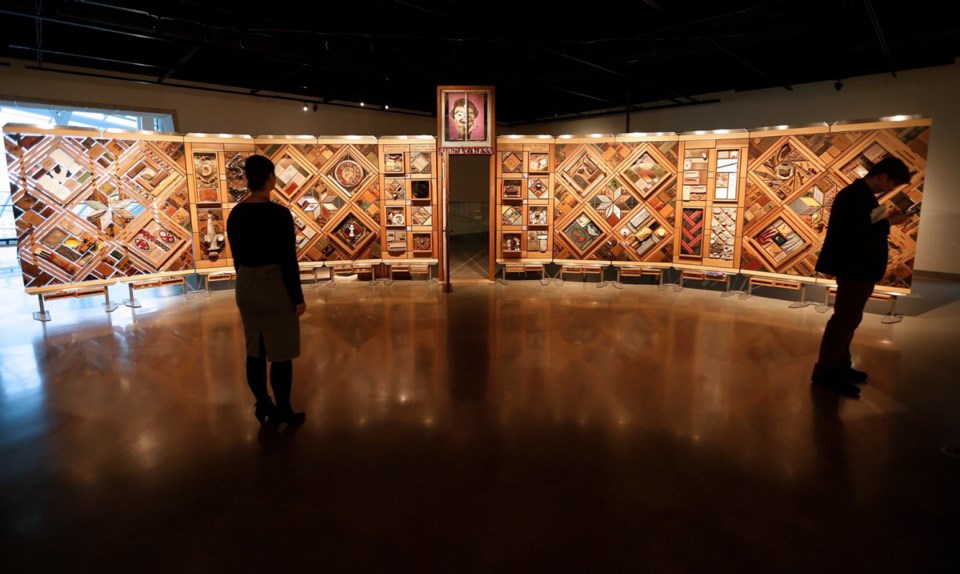An Island First Nations leader sees “a new day” in Canada as a result of Tuesday’s final report from the Truth and Reconciliation Commission on the fallout from the suffering and deaths of aboriginal children in residential schools decades ago.
The fact that Justin Trudeau’s Liberal government is committed to implementing all 94 “calls to action” shows “a shift happening,” said Ken Watts, vice-president of the Nuu-chah-nulth Tribal Council, which represents 14 communities and about 9,700 members. Watts said he hopes that First Nations people will be realistic in the face of the vast number of changes that the commission and Ottawa are calling for in such areas as child welfare, health and the justice system.
“We can’t solve all our community’s problems in a four-year term. Over 150 years of issues we’ve had with previous government can’t be undone in one term, but the path to reconciliation has started,” Watts said.
Tuesday’s report is the culmination of six years of testimony by 6,000 survivors — but not all of them.
“There are many who did not get to tell their story as they are no longer with us. We will not know how many passed and we may have not heard all current survivors’ stories as some may have not been to willing to share,” Watts said.
The seven-volume, 3,766-page report supported the commission’s recommendations on remaking the relationship between Canada and its First Nations, which it says were severely impaired by forcibly taking children away from their parents, culture, language and self-respect.
The release of the report came just hours the Canadian Museum for Human Rights opened the show The Witness Blanket by Victoria artist Carey Newman, whose father is a residential school survivor.
Newman’s exhibit expresses the history of the schools through more than 800 objects incorporated into a 12-metre artwork — from cut-off braids to the infirmary door saved from St. Michael’s Residential School in Alert Bay before the facility was torn down. The material was gathered during 200,000 kilometres of travel with his team.
Tseshaht First Coun. Hugh Braker of Port Alberni hopes that today’s youth can break free from the cycle of dysfunction that residential schools caused.
The children came out of the schools without having lived with their parents, without knowing about their cultures or how to care for children.
“Many of them brought terrible burdens with them out of residential schools and what that resulted in was a lot of dysfunctional families for generations,” Braker said.
“The Truth and Reconciliation Commission recognized that, and they’re saying that we have to look at the youth today and stop those effects — and I really liked that a lot.”
Aboriginal unemployment must be addressed and the current child-welfare system “completely re-focused” with more research into aboriginal child protection agencies, he said.
At 63, Braker vividly recalls seeing other children being sent to the Port Alberni residential school, surrounded by a barbed-wire fence — a fate he escaped because he was classified as a non-status Indian at the time.
Port Alberni residential students were subjected to widespread assaults by former dorm supervisor Arthur Henry Plint, later jailed for abuse of boys from 1948 to 1968. Plint was sentenced to 11 years in prison in 1995 on 19 counts of sexual assault.
Lack of food forced students to climb the fence to a farmer’s field in darkness to eat raw potatoes, Braker said. And the federal government authorized experiments on the students without their consent, limiting calcium intake to see the effects on their bones, he said.
Native languages were “essentially beaten out of aboriginal students,” as the commission recognized, he said.
Rebuilding native languages is going to be very difficult, Braker said. “But this is the responsibility of Canada.”
“One of the things Canada has to do when looking at the Truth and Reconciliation Commission report is to also reflect on the Canadian government’s history. What I mean is that the residential schools [were] part of a concentrated effort to assimilate Indians, to get rid of the Indianness in the Indian as we were called back then.
“You have to look at residential schools as one part of a very notorious and evil puzzle. The other parts included the provincial government outlawing the potlatch, which was not rescinded until the early 1950s.”



